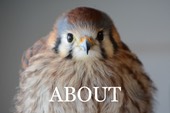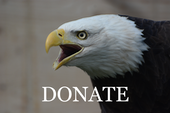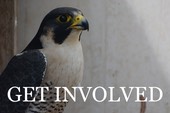Fall Brings Multiple Hunting Seasons to the West
There are hunting seasons for big game such as deer and elk, water fowl and upland game birds. Most other native birds, including raptors, are protected by both state and federal law. It was very sad to admit three gunshot hawks recently in a span of five days.
The first was Cooper’s Hawk 20-558 from Haines, OR. The hawk's right humerus and scapula were fractured. We suspected the cause was gunshot, but there were no metal fragments visible on an x-ray and we found only one wound on the right shoulder. A necropsy confirmed the hawk had been shot (likely with non-lead ammunition which does not fragment like lead). There was a small entrance wound on the left side of the back. The wound channel went under the spine, through the right scapula and humerus, exiting at the shoulder.

Red-tailed Hawk 20-563 from Wapato, WA was number two. The x-ray below leaves no doubt as to the cause of the hawk’s multiple fractures (6 shotgun pellets are visible). When the accompanying damage in the right wrist, elbow and hip were considered, euthanasia was the most humane option.

The third gunshot hawk was Red-tailed Hawk 20-565 from Eltopia, WA. There are 9 pellets or pellet fragments in the first x-ray (4 in the body, 1 in each wingtip, 1 in the neck and 2 in the head). The second x-ray shows 5 more pellets in the left leg and foot. There are multiple fractures in the major and minor metacarpals in the left wing. The wing has been splinted to immobilize the fractures. The hawk appears to be blind in his left eye. The hearing in the left ear may also be affected.
A further complication is a blood lead level of 24.3 micrograms/deciliter. That is subclinical lead poisoning and was caused by the hawk eating prey that had been shot with lead ammunition. We are chelating to remove the lead. There is reasonable hope that the metacarpals will heal and the wing will be fully functional. Assuming that is the case, the hawk will need further evaluation to see if he can catch wild game with his visual and possible hearing deficits. You can see why we are able to release so few gunshot birds.


The hawk is very alert, always keeping his good eye forward. He has an excellent appetite and is very handy with his feet and beak.








